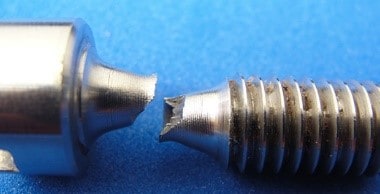
Reliability initiatives are implemented to improve a company’s bottom line, period.
Root cause analysis is one of the fastest ways I know to achieve this improvement. My boss used to say “show me the money” because he realized that upper management was driven by ROI (Return on Investment) or ROC (Return on Capital).
You can argue all you want on whether that is good or bad, but it is the way things are.
With a reliability initiative, this return is generated by reducing costs or improving output, or a combination of both. This, in turn, is done by improving reliability by eliminating repetitive problems which extend the MTBF of failures or PM requirements, etc..
This allows you to spend less or make more product at a higher margin.
 Defect elimination is the key
Defect elimination is the key
The process of eliminating failures is normally included as part of the overall process of Asset Management, which involves RCM, maintenance planning, scheduling, training and other tools.
I have always found it interesting that problem-solving or Root Cause Analysis is not listed as one of these tools.
This fact that the tool is reactive and not proactive may be the reason. For another perspective on where and how this fits into the overall plan to improve reliability, you can review the article by Jason Tranter where he talks about improving reliability, and specifically about defect elimination, which is about the 4th paragraph from the end.
It is, without a doubt, in my opinion, the single most cost-effective tool with some of the highest ROI available.
This is not to say that the other tools are not important, or that they shouldn’t be pursued. I personally was involved in setting up an entire system with all the bells and whistles, and programs at the facility I worked for at Alcoa.
This included planning and scheduling and even running the storeroom for a time.
Cost-effectiveness
Why do I believe it is the single most cost-effective tool? It is inexpensive and can be implemented very quickly. An employee can go to a public seminar for less than $2,000.
Even less if it is an onsite class.
From this 2-day class, you come away with the skills to analyze a problem and offer up effective solutions. Theoretically within a week, you can easily make back the investment in the training. I know this because I’ve done it and clients confirm it.
A simple example
While at Alcoa I required my students to do a project after the RCA class I taught, and if they didn’t, I threatened to send their plant manager an invoice for the public class cost of $1,595.
At the time my department paid for the materials and my boss sponsored my time so they actually paid $0 for the class. Since they didn’t want to explain an additional cost to their plant, I had plenty of projects.
One project I remember was an analysis done by a student done the day after the class.
She grabbed a couple of people that attended the same class and did the analysis and proposed an effective solution that very next day. The solution ended up only costing some maintenance time. The savings were calculated at $400,000 based on real numbers.
To put it in perspective of potential outside participants, if the class and time to analyze and implement were $5,000 then the ROI would be 8,000% (savings/investment).
Imagine going to your management and telling them you just saved them $400,000 with a $5,000 investment!
Having been involved in the capital side of engineering for a while I know that many times they were ecstatic if the ROI was a whopping 50%!
Most plant management personnel will be extremely happy if you can show them this kind of data and will probably start to take notice of you and perhaps any programs you are trying to implement.
Show them the money.
 Ask a question or send along a comment.
Please login to view and use the contact form.
Ask a question or send along a comment.
Please login to view and use the contact form.
Leave a Reply